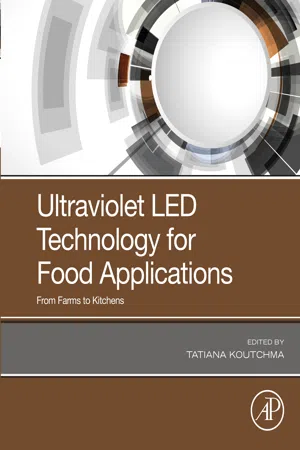
Ultraviolet LED Technology for Food Applications
From Farms to Kitchens
Tatiana Koutchma
- 146 pagine
- English
- ePUB (disponibile sull'app)
- Disponibile su iOS e Android
Ultraviolet LED Technology for Food Applications
From Farms to Kitchens
Tatiana Koutchma
Informazioni sul libro
Ultraviolet LED Technology for Food Applications: From Farms to Kitchens examines the next wave in the LED revolution and its ability to bring numerous advantages of UVC disinfection. As UVC LED-based light fixtures will become the driving force behind wider adoption, with potential use in the treatment of beverages, disinfection of food surfaces, packaging and other food contact and non-contact surfaces, this book presents the latest information, including LEDs unique properties and advantages and the developments and advances made in four areas of application, including produce production and horticulture, post-harvest and post processing storage, safety and point-of-use applications.
Alternative opportunities to current practices of food production and processing that are more sophisticated and diverse are being intensively investigated in recent decades, things like Ultraviolet light (UV) irradiation. The effects of UVC LEDs against bacteria, viruses and fungi already have been demonstrated and reported, along with the first applications for disinfection of air, water and surface made for the "point-of-use" integration.
- Brings unique advantages of LEDs for foods from farm to kitchens
- Explores applications and advances in LEDs for horticulture, crops production, postharvest reservation and produce storage
- Investigates UV LEDs in food safety